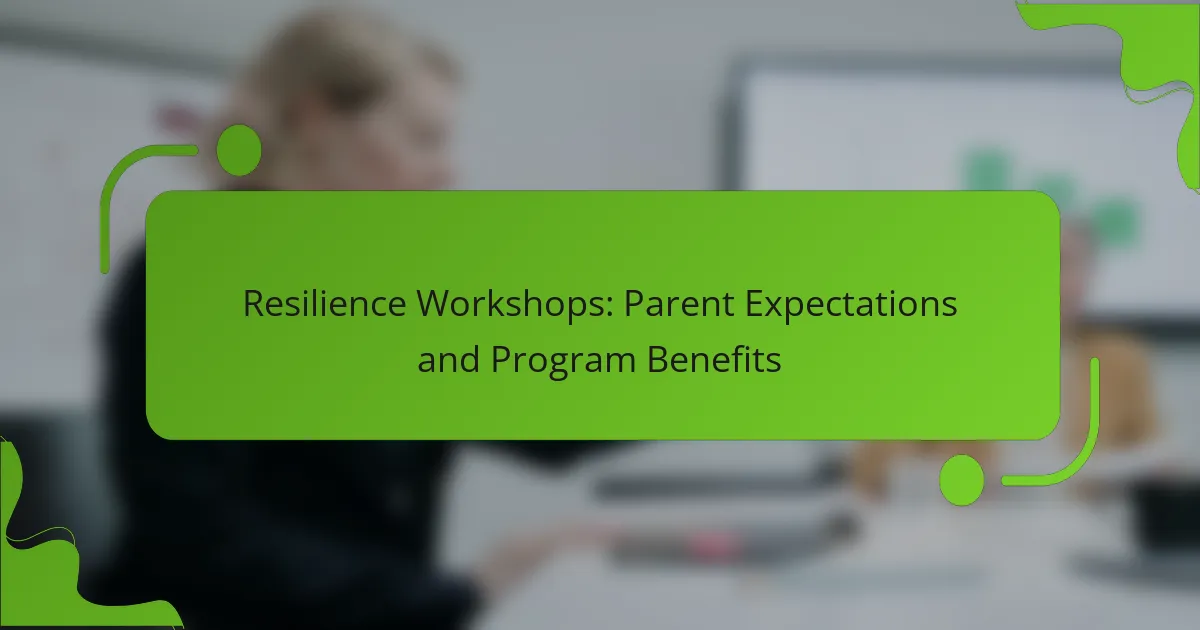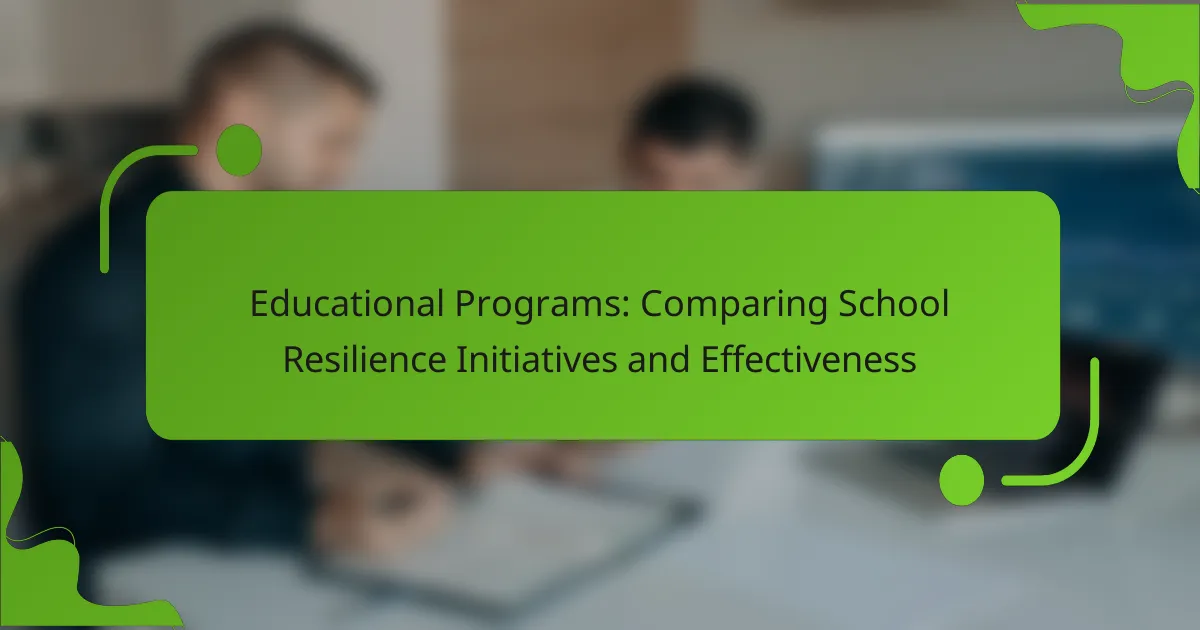Suomessa resilienssin opettaminen perustuu kokonaisvaltaiseen lähestymistapaan, joka korostaa tunne- ja yhteistyöoppimista sekä ulkoilua. Tämä monipuolinen strategia auttaa oppilaita kehittämään selviytymis- ja sopeutumiskykyjä, jotka ovat elintärkeitä elämän haasteiden kohtaamisessa. Suomen kulttuuriset arvot, kuten yhteisöllisyys ja luonnon kunnioitus, muokkaavat resilienssin opetusta ja luovat tukevan ympäristön yksilölliselle ja kollektiiviselle resilienssille.

How is resilience taught in Finnish schools?
Resilience in Finnish schools is taught through a holistic approach that emphasizes emotional education, collaborative learning, and outdoor activities. This multifaceted strategy helps students develop coping skills and adaptability, essential for navigating challenges in life.
Integration of emotional education
Emotional education is a core component of resilience training in Finnish schools. It involves teaching students to recognize and manage their emotions, fostering self-awareness and empathy. Programs often include discussions about feelings, role-playing, and reflective exercises that encourage students to express themselves.
Teachers are trained to create a supportive environment where students feel safe to share their thoughts and experiences. This integration helps students build strong emotional foundations, which are crucial for resilience.
Collaborative learning environments
Collaborative learning is another key aspect of resilience education in Finland. Students work together on projects, which promotes teamwork and communication skills. This approach not only enhances academic learning but also teaches students how to navigate conflicts and support one another.
Group activities often include problem-solving tasks that require students to rely on each other’s strengths. This collaboration cultivates a sense of community and belonging, reinforcing the idea that resilience is often built through social connections.
Role of outdoor activities
Outdoor activities play a significant role in teaching resilience in Finnish schools. Regular excursions and nature-based learning experiences encourage students to face physical challenges and develop perseverance. Activities such as hiking, camping, and team sports help students learn to manage risks and overcome obstacles.
These experiences not only improve physical fitness but also enhance mental well-being. Engaging with nature allows students to recharge and reflect, further strengthening their resilience in both academic and personal contexts.
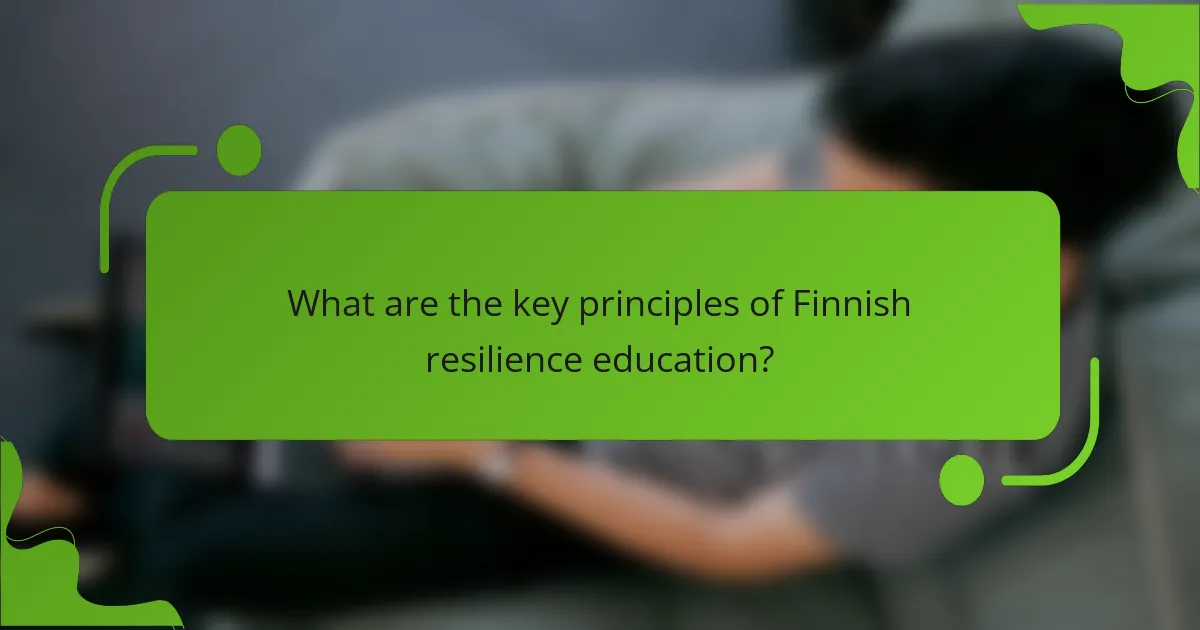
What are the key principles of Finnish resilience education?
Finnish resilience education focuses on fostering skills that help students adapt to challenges and recover from setbacks. It emphasizes the development of personal strengths, social connections, and problem-solving abilities to prepare learners for life’s uncertainties.
Focus on student autonomy
In Finnish education, student autonomy is a cornerstone of resilience. Students are encouraged to take charge of their own learning, making choices about their studies and setting personal goals. This approach cultivates a sense of ownership and responsibility, essential for developing resilience.
Teachers facilitate this autonomy by providing guidance rather than direct instruction, allowing students to explore subjects that interest them. For instance, project-based learning enables students to pursue topics they are passionate about, enhancing their engagement and commitment.
Emphasis on social skills
Social skills are integral to resilience education in Finland. Schools prioritize collaborative learning, where students work together on projects and engage in discussions. This interaction helps them build strong relationships and develop empathy, which are crucial for navigating social challenges.
Programs that promote teamwork and communication skills, such as group assignments and peer mentoring, are common. These experiences not only enhance social competence but also prepare students to seek support from peers during difficult times.
Encouragement of problem-solving
Problem-solving is a vital component of Finnish resilience education. Students are taught to approach challenges with a solution-oriented mindset, encouraging them to think critically and creatively. This skill is nurtured through real-life scenarios and hands-on activities that require innovative thinking.
For example, students might engage in simulations or case studies that mimic real-world problems, allowing them to practice identifying issues and brainstorming solutions. This experiential learning fosters resilience by equipping students with the tools they need to tackle obstacles effectively.
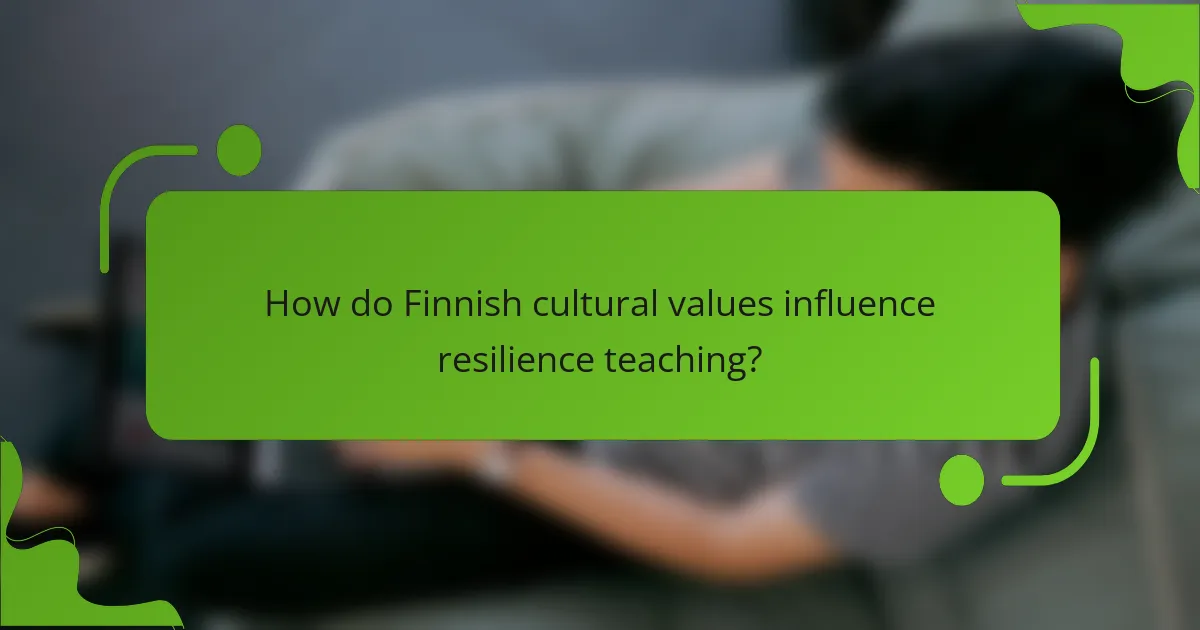
How do Finnish cultural values influence resilience teaching?
Finnish cultural values significantly shape how resilience is taught, emphasizing community, respect for nature, and equality. These principles create a supportive environment that fosters individual and collective resilience among students.
Collectivism and community support
In Finland, collectivism plays a crucial role in resilience education by promoting a strong sense of community. Students learn that they are part of a larger group, which encourages collaboration and mutual support during challenges.
Schools often organize group activities and projects that require teamwork, helping students develop social bonds and a sense of belonging. This community-oriented approach not only strengthens individual resilience but also enhances the overall well-being of the group.
Respect for nature and well-being
Finnish culture places a high value on the connection between nature and well-being, which is integrated into resilience teaching. Outdoor activities, such as hiking and nature excursions, are common in schools, allowing students to experience the calming effects of nature.
By fostering an appreciation for the environment, educators help students develop coping strategies and stress management skills. This respect for nature encourages mindfulness and promotes mental health, essential components of resilience.
Value of equality in education
Equality is a cornerstone of Finnish education, influencing how resilience is taught. All students, regardless of background, receive equal opportunities to learn and grow, which helps to level the playing field and build confidence.
This commitment to equality fosters an inclusive environment where diverse perspectives are valued. Educators are trained to recognize and address individual needs, ensuring that every student has the support necessary to develop resilience and thrive.
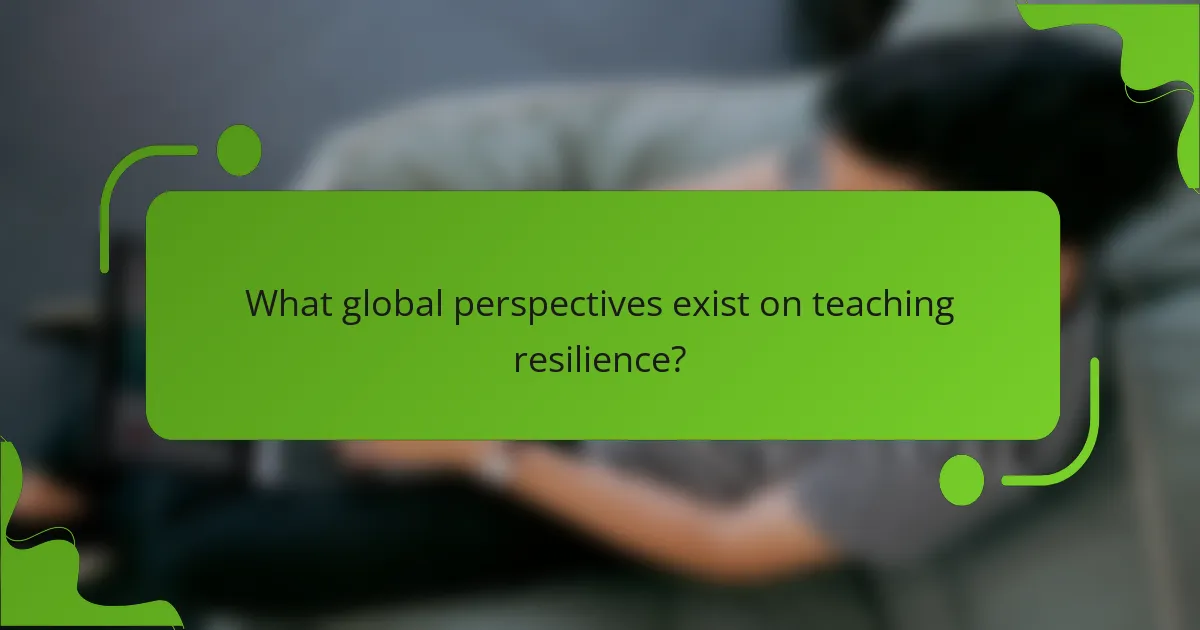
What global perspectives exist on teaching resilience?
Teaching resilience globally encompasses various methods and philosophies that aim to equip individuals with the skills to cope with challenges. Different cultures emphasize distinct approaches, reflecting their unique values and educational systems.
Comparative analysis with Nordic countries
Nordic countries, including Finland, prioritize a holistic approach to education that fosters resilience through collaboration, emotional support, and a strong sense of community. Schools often integrate social-emotional learning into the curriculum, allowing students to develop coping strategies in a supportive environment.
For instance, in Sweden, the curriculum encourages teamwork and problem-solving, which helps students build resilience by facing challenges together. This collaborative learning model contrasts with more competitive educational systems found elsewhere.
Resilience education in East Asian cultures
East Asian cultures, such as those in Japan and South Korea, often emphasize perseverance and hard work as key components of resilience. Education systems focus on discipline and academic achievement, which can foster resilience but may also lead to high levels of stress among students.
In Japan, for example, the concept of “gaman,” or enduring difficult situations with patience, is deeply ingrained in the culture. Schools encourage students to face challenges head-on, often through rigorous academic training and extracurricular activities that promote resilience.
Influence of American educational practices
American educational practices often highlight individualism and self-advocacy, which can shape resilience in unique ways. Programs that focus on social-emotional learning and growth mindset are increasingly popular, teaching students to view challenges as opportunities for growth.
For example, many schools in the U.S. implement Positive Behavioral Interventions and Supports (PBIS) to promote resilience by encouraging positive behavior and providing support systems. This approach contrasts with more traditional methods that may not prioritize emotional well-being as strongly.
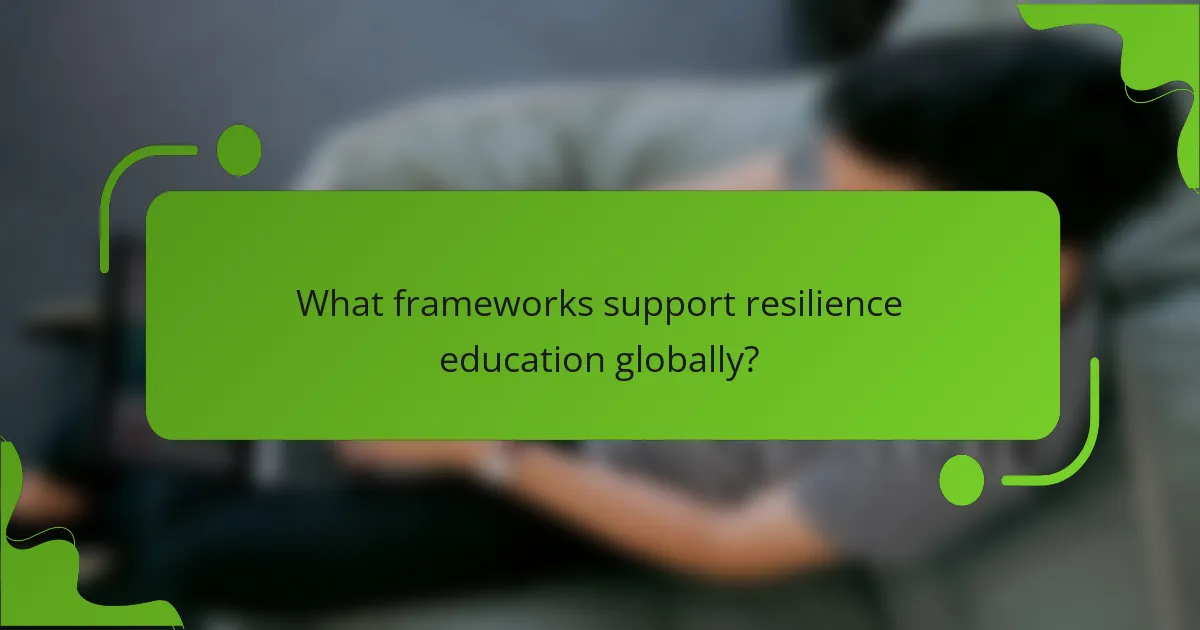
What frameworks support resilience education globally?
Various frameworks support resilience education worldwide, emphasizing the development of skills to cope with challenges. These frameworks provide guidelines and strategies for educators to foster resilience in students through structured approaches.
UNESCO guidelines for education
UNESCO provides a comprehensive framework for education that promotes resilience by integrating social and emotional learning into curricula. These guidelines encourage educational institutions to create supportive environments where students can develop critical life skills.
Key components include fostering a sense of belonging, promoting mental health awareness, and encouraging community involvement. Schools are urged to implement programs that address both academic and emotional needs, ensuring a holistic approach to education.
Social and emotional learning frameworks
Social and emotional learning (SEL) frameworks focus on teaching students essential skills such as self-awareness, self-management, social awareness, relationship skills, and responsible decision-making. These competencies are crucial for building resilience in students.
Effective SEL programs often include interactive activities, role-playing, and discussions that help students practice these skills in real-life situations. Schools implementing SEL frameworks report improvements in student behavior, academic performance, and overall well-being.

How can educators implement resilience strategies?
Educators can implement resilience strategies by fostering a supportive environment that encourages students to face challenges and develop coping skills. This involves integrating practical techniques, engaging with the community, and providing ongoing professional development for teachers.
Practical classroom techniques
Effective classroom techniques for teaching resilience include incorporating social-emotional learning (SEL) into the curriculum. Activities like role-playing, group discussions, and reflective journaling can help students process their emotions and experiences.
Additionally, teachers can use positive reinforcement to encourage risk-taking and perseverance. Setting achievable goals and celebrating small successes can motivate students to overcome obstacles.
Community engagement initiatives
Community engagement initiatives play a crucial role in building resilience among students. Schools can partner with local organizations to provide mentorship programs, workshops, and resources that support students and their families.
In Finland, for example, collaboration with youth centers and sports clubs can create opportunities for students to develop teamwork and leadership skills, further enhancing their resilience.
Professional development for teachers
Professional development is essential for equipping teachers with the skills to teach resilience effectively. Workshops and training sessions focused on SEL strategies and classroom management can empower educators to create a nurturing environment.
Moreover, ongoing support through peer collaboration and sharing best practices can help teachers refine their approaches and stay updated on effective resilience-building techniques.


